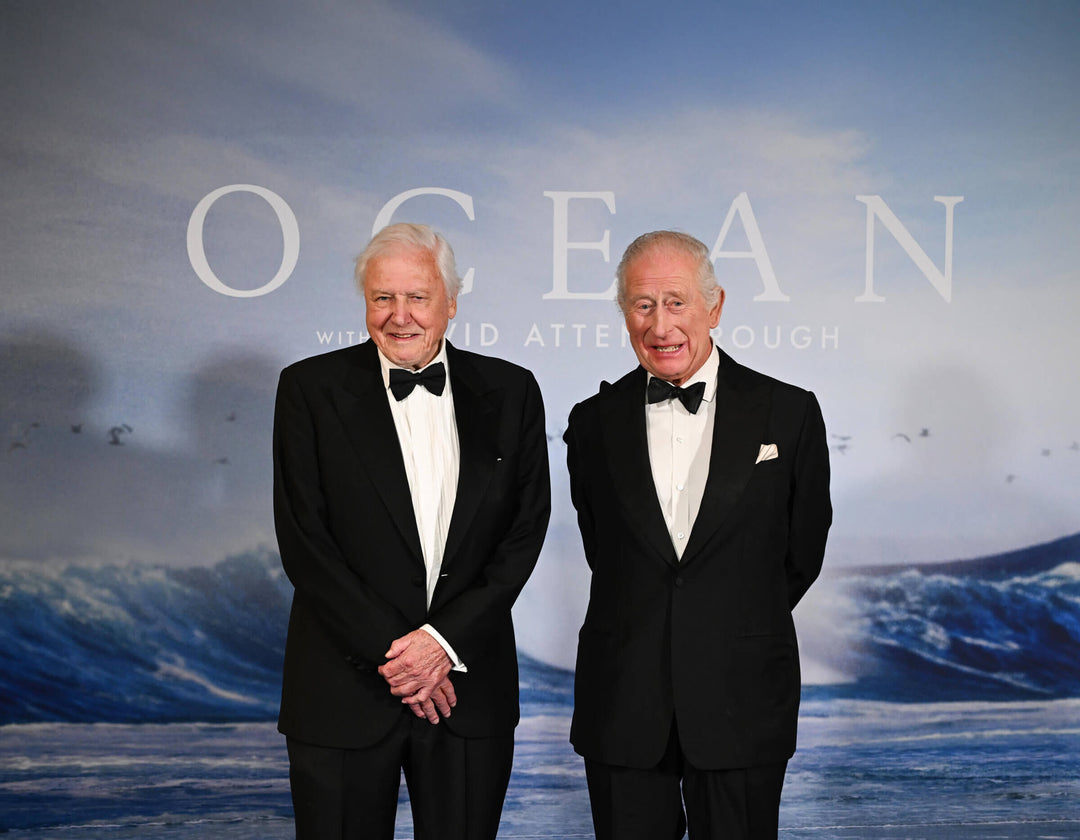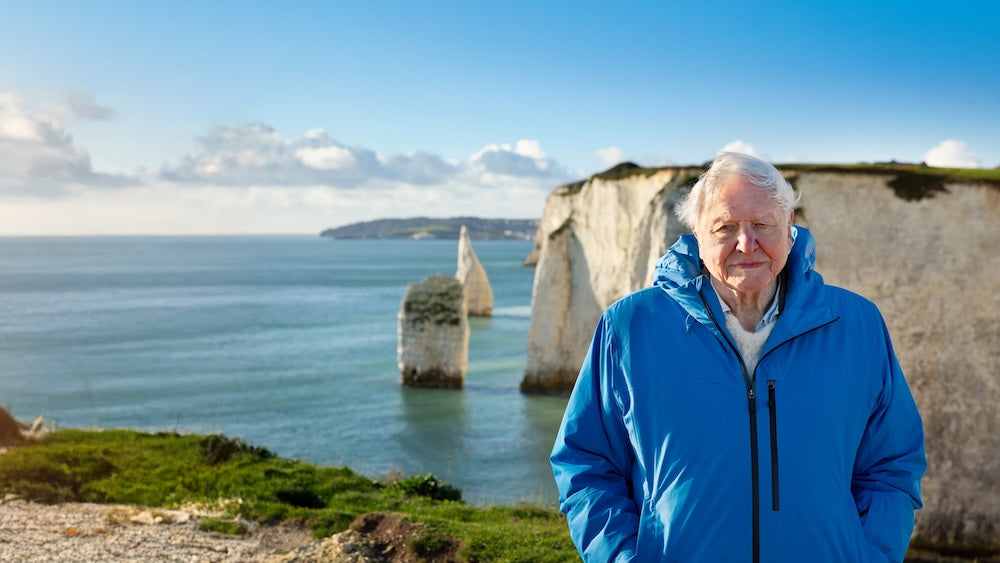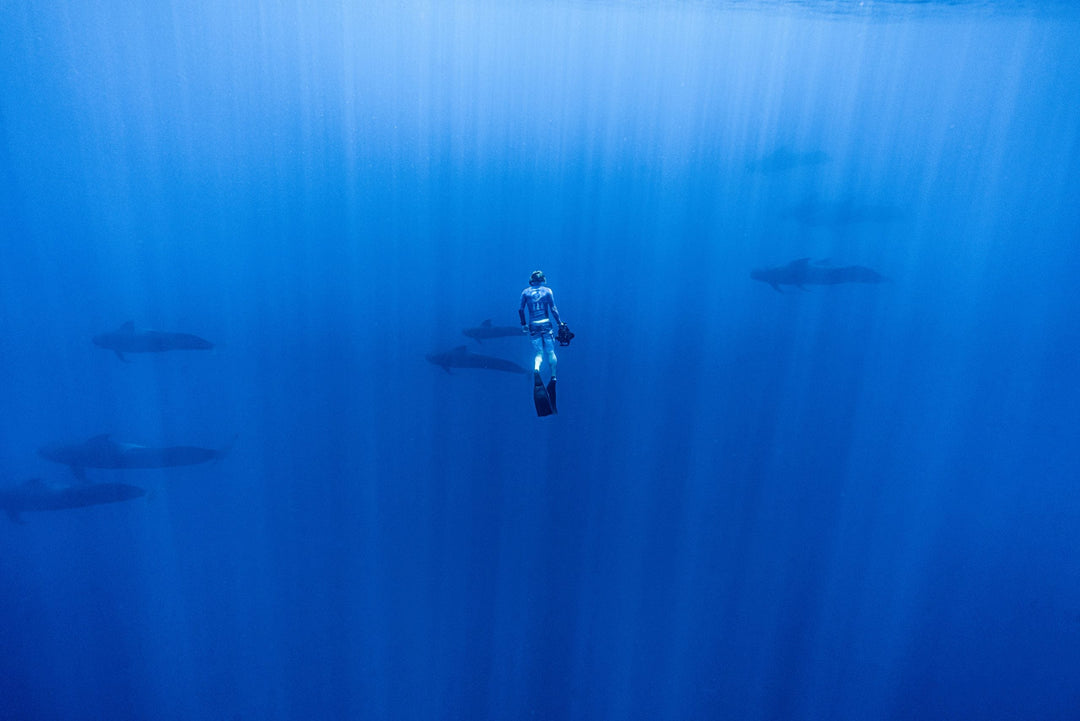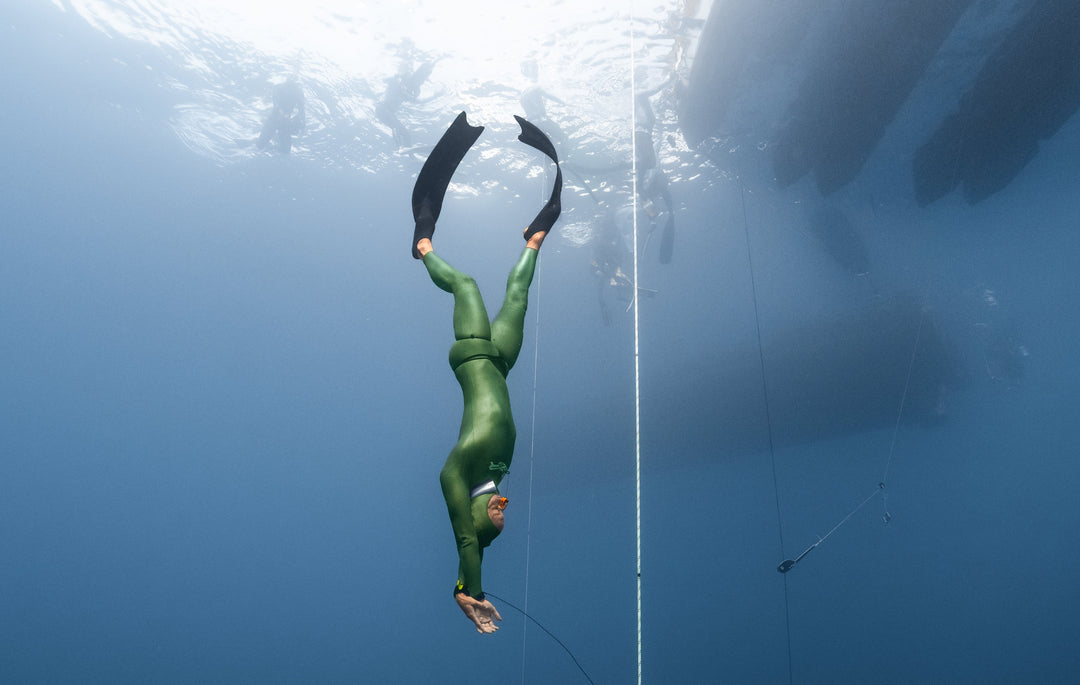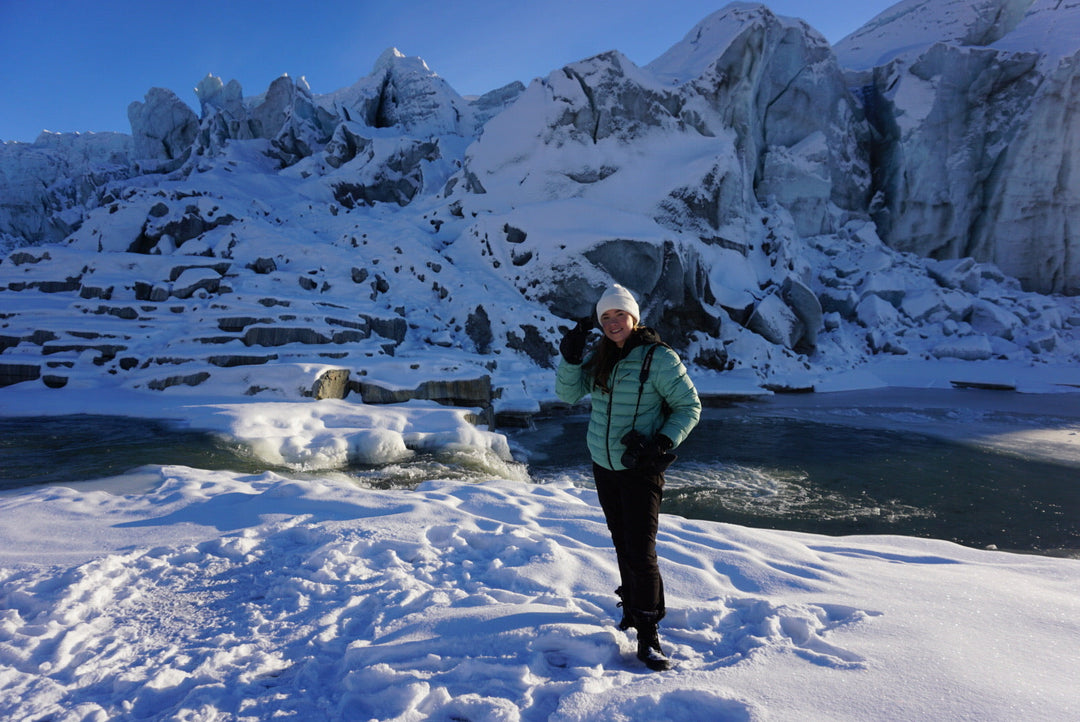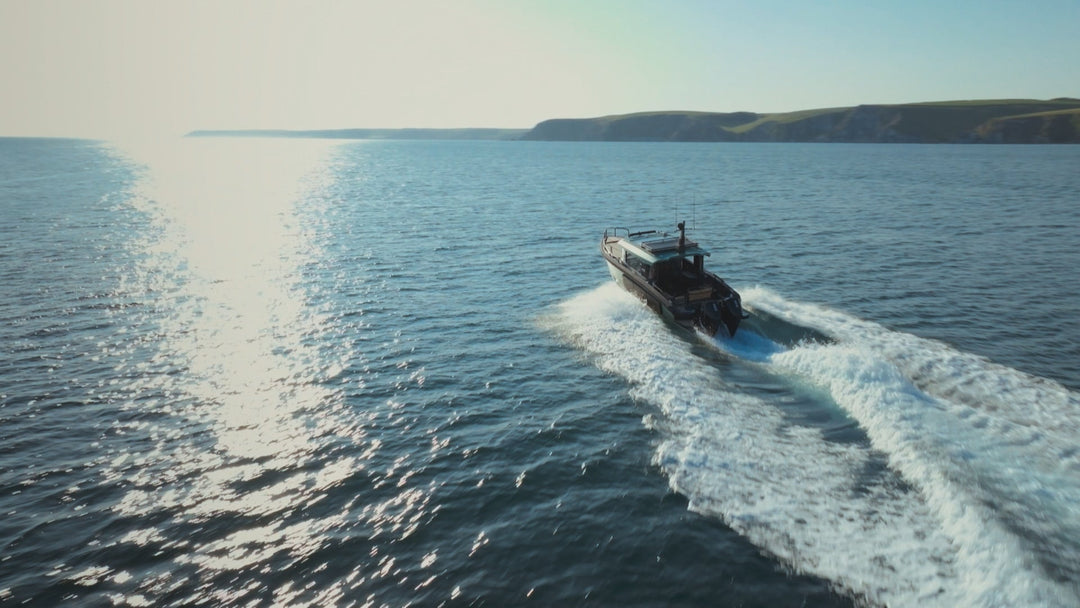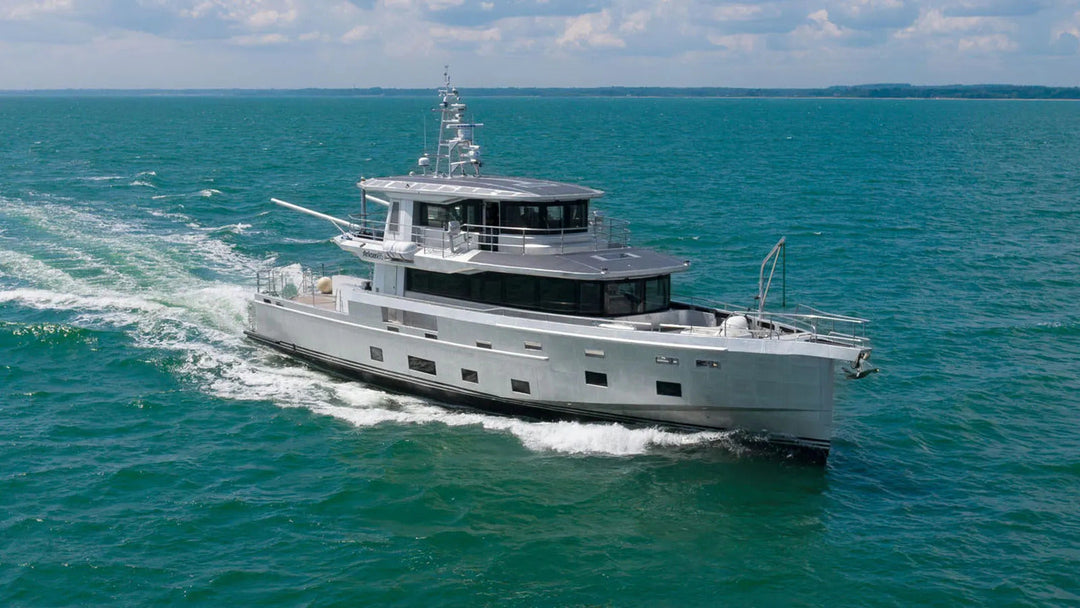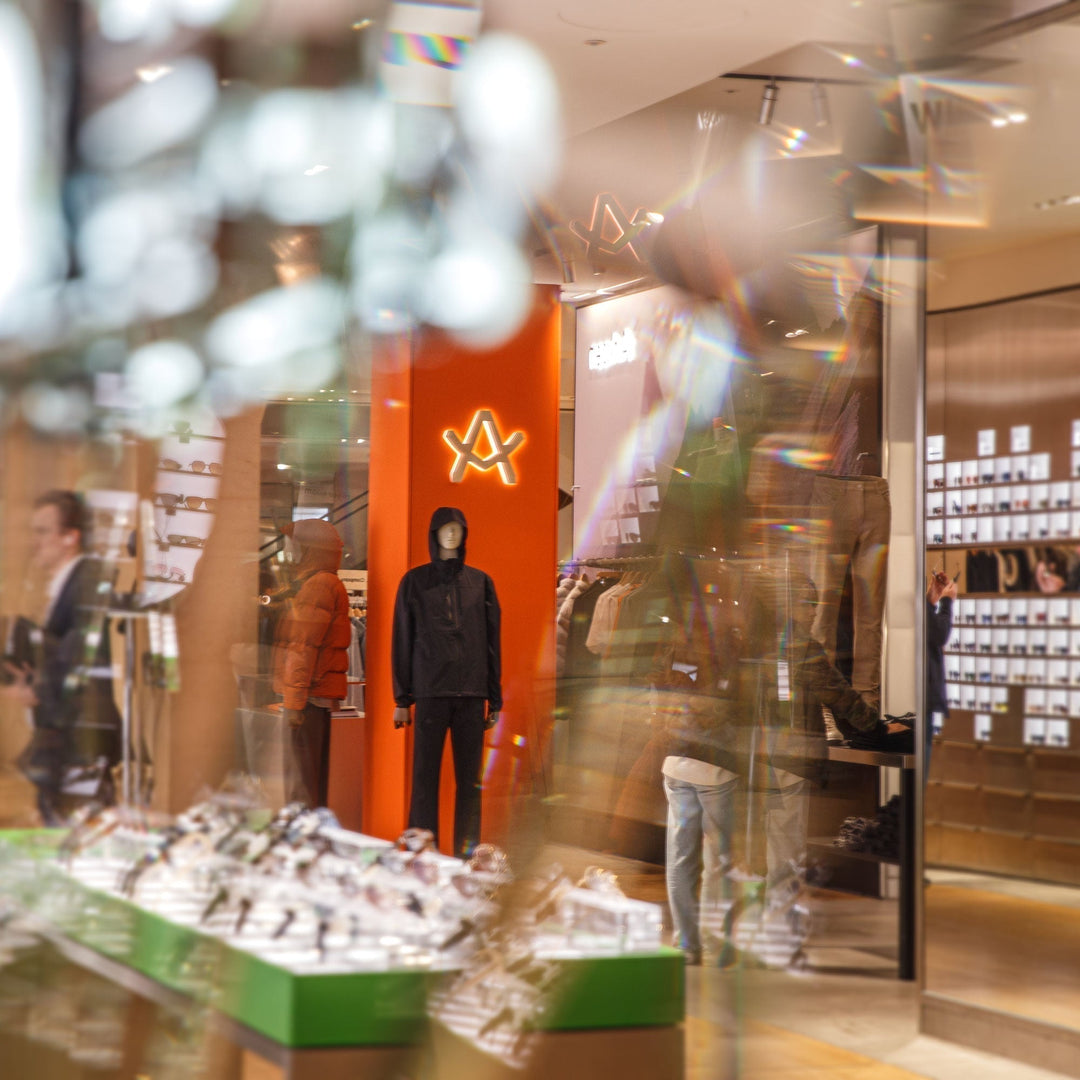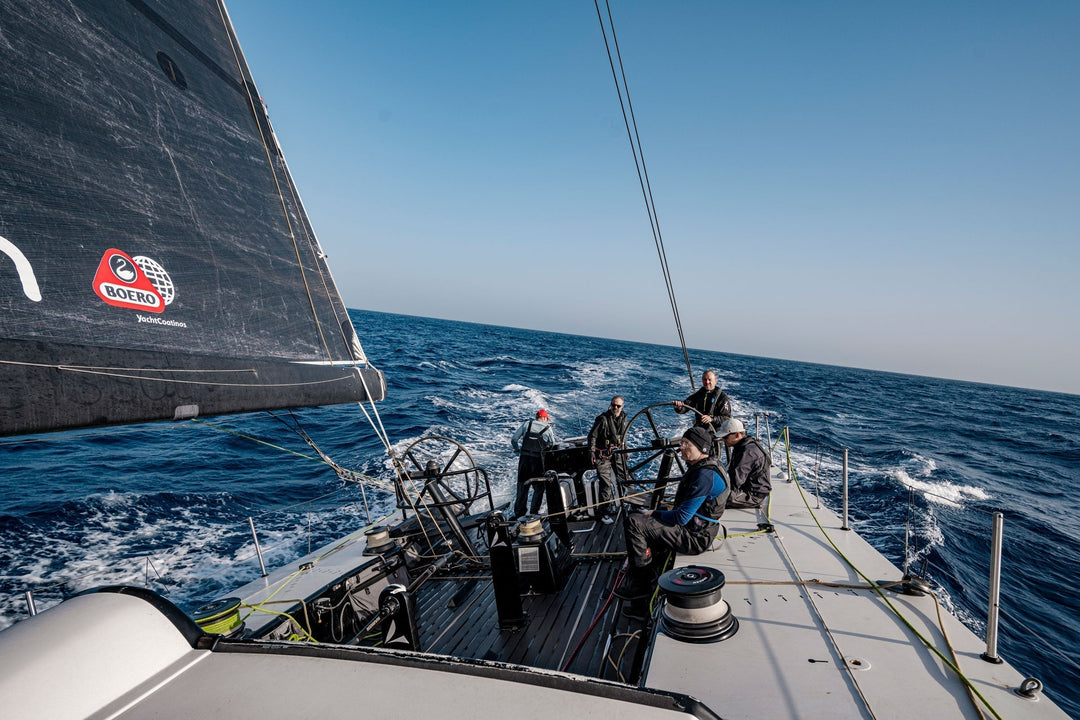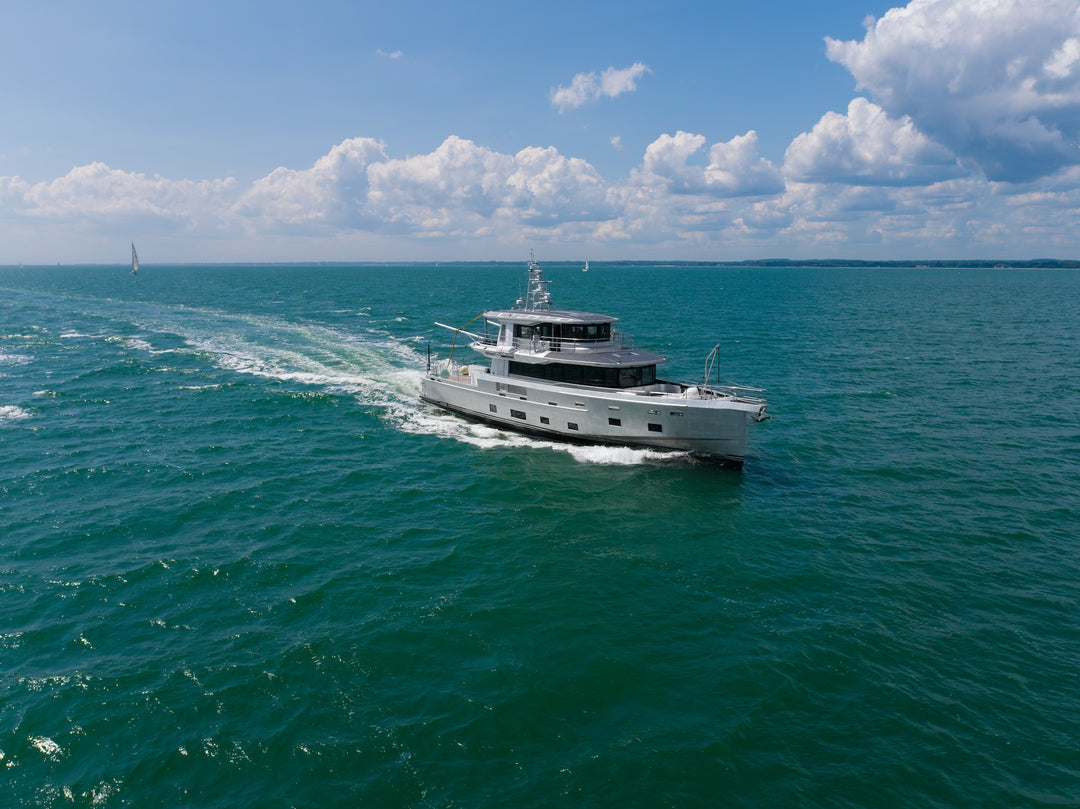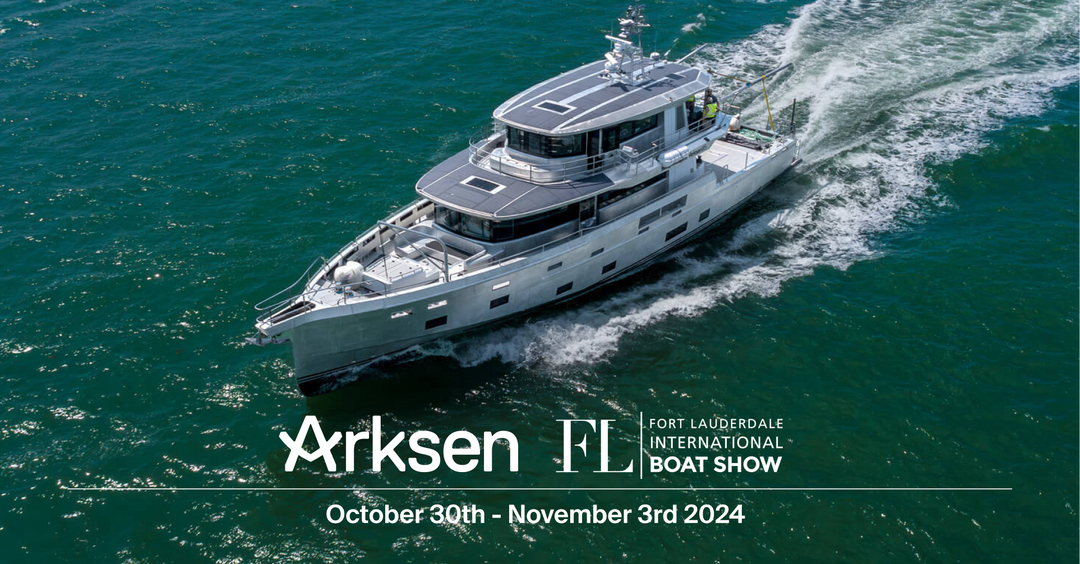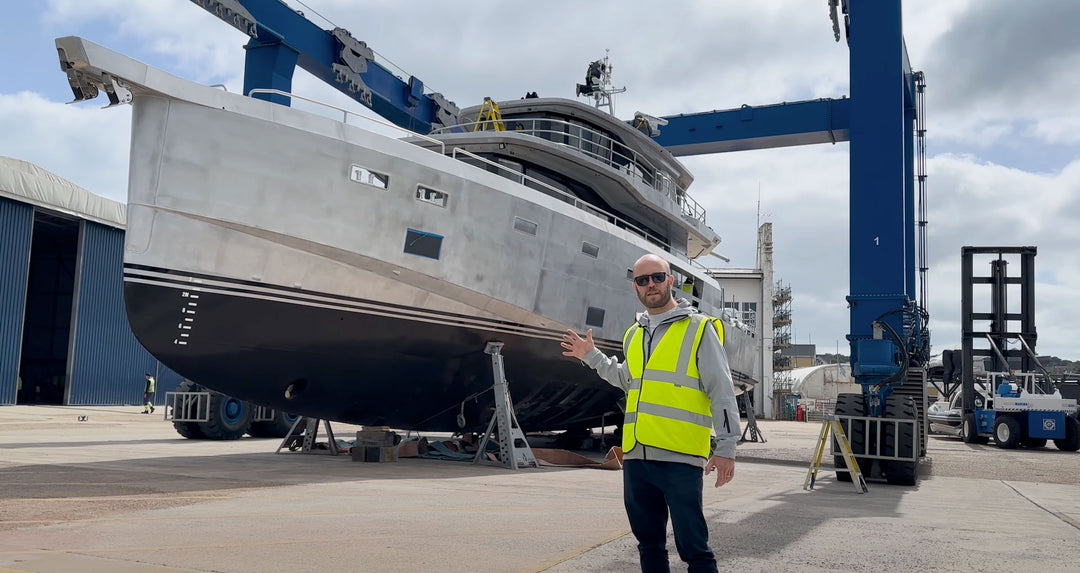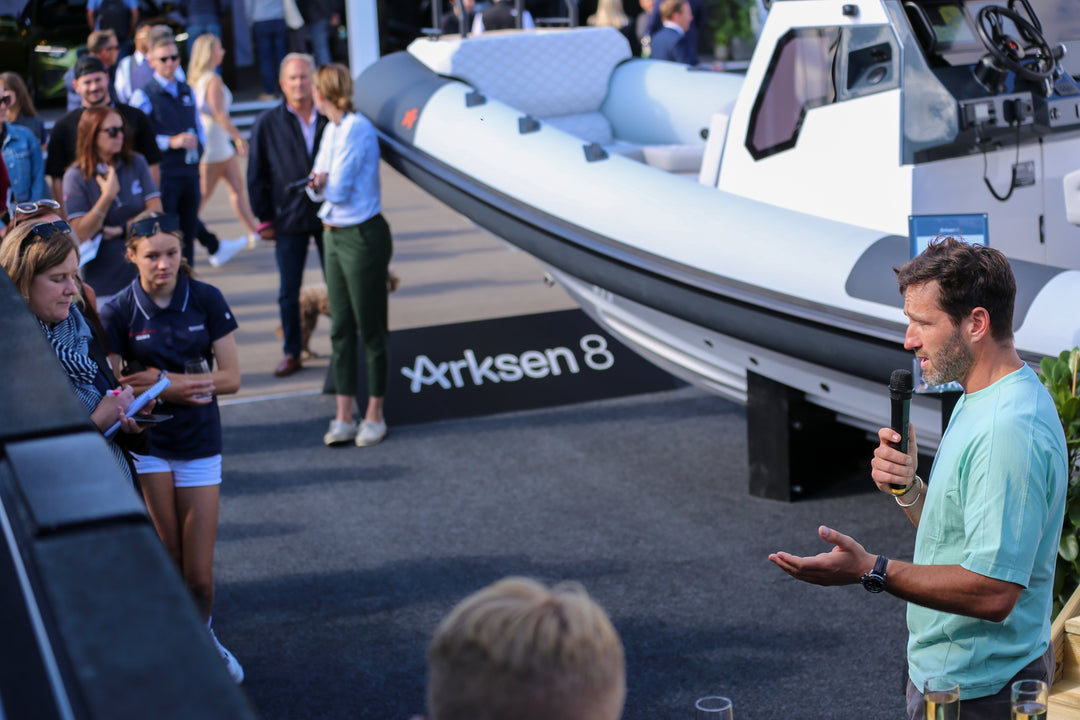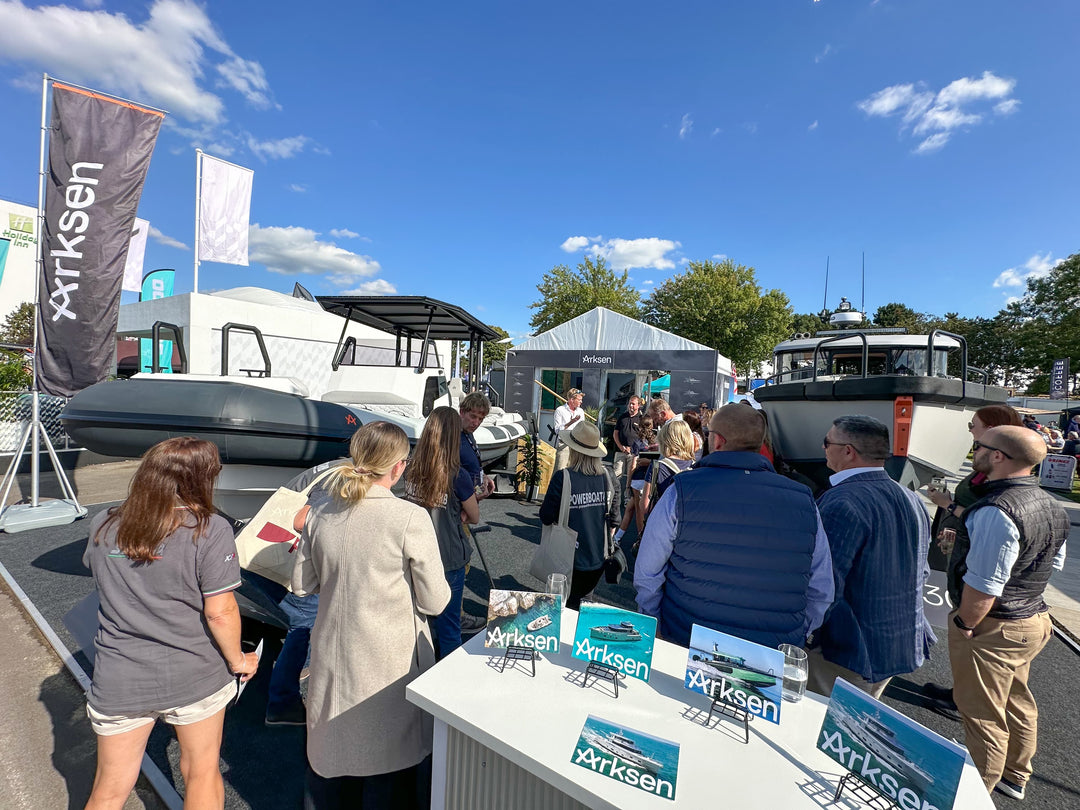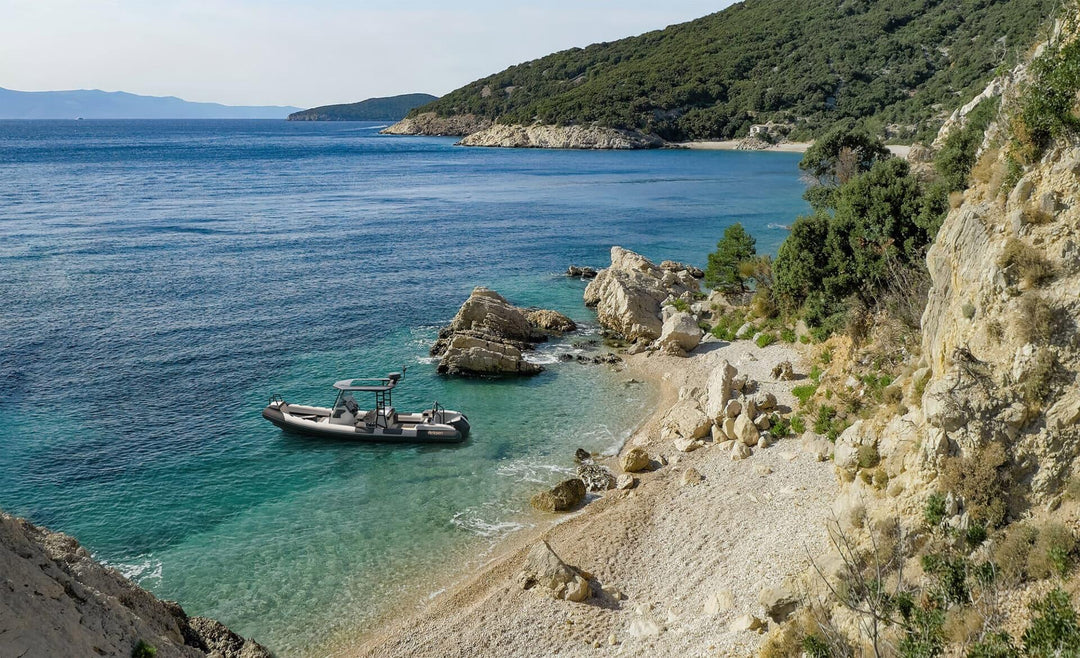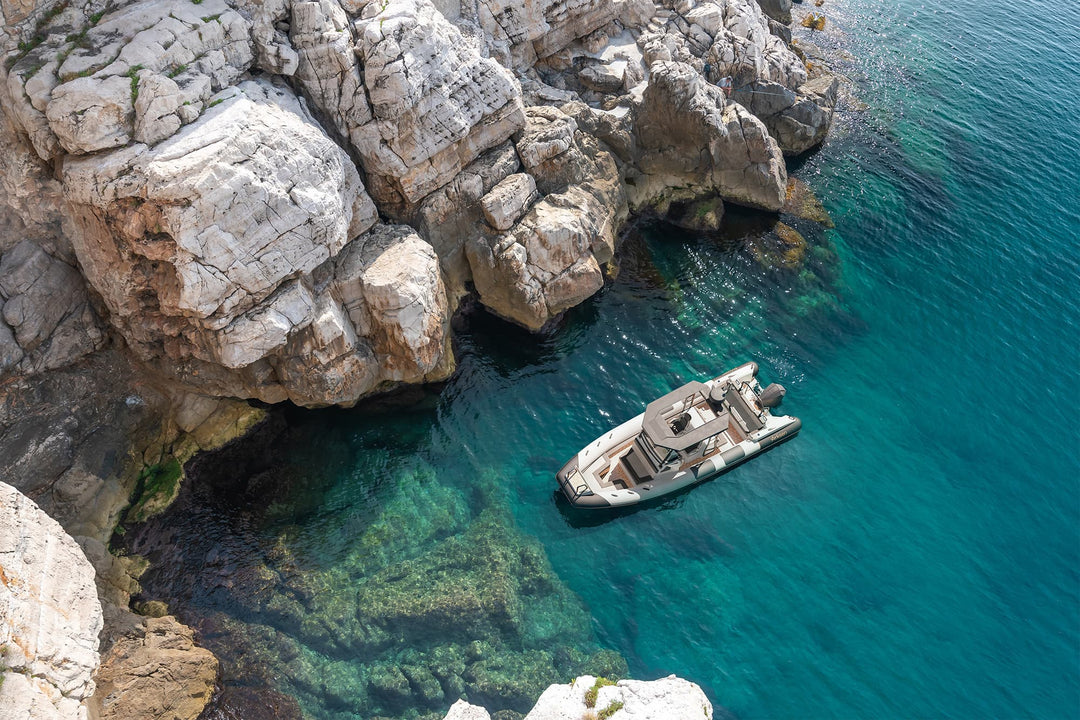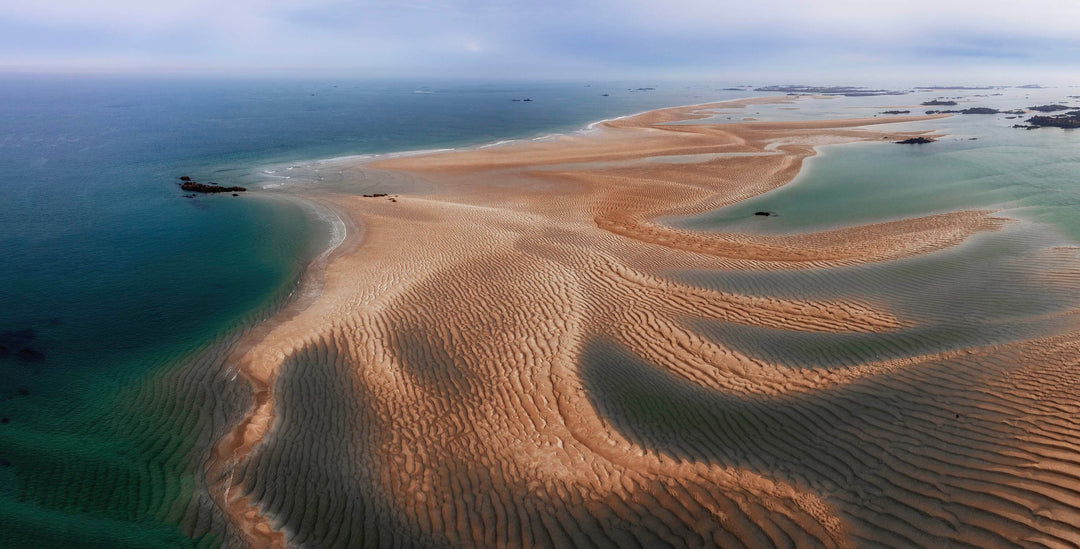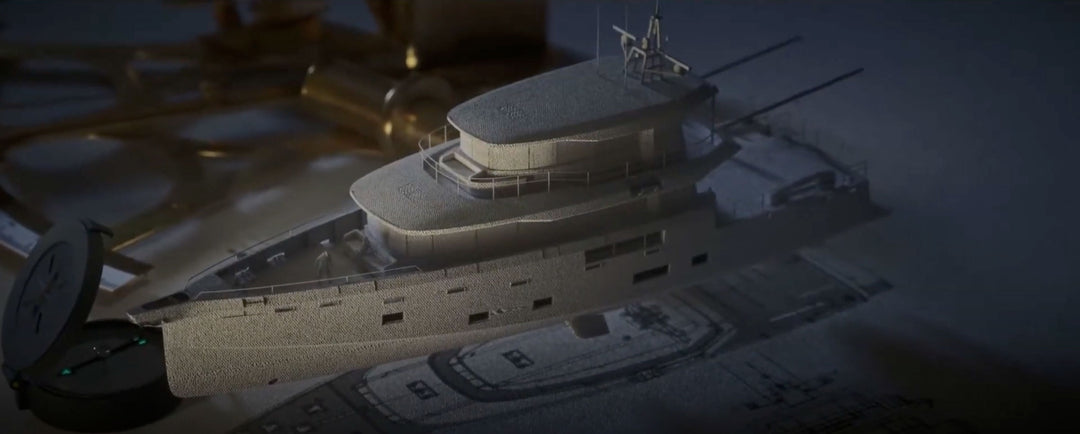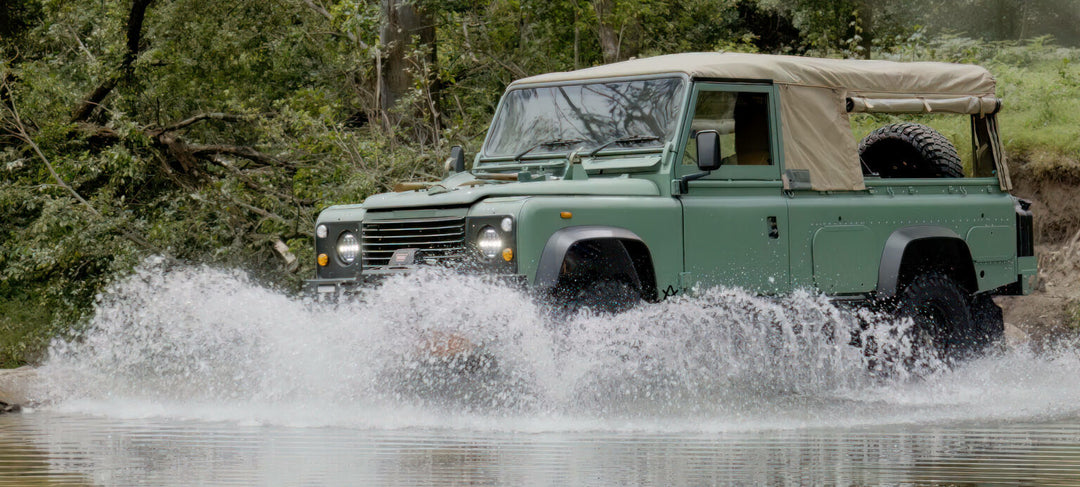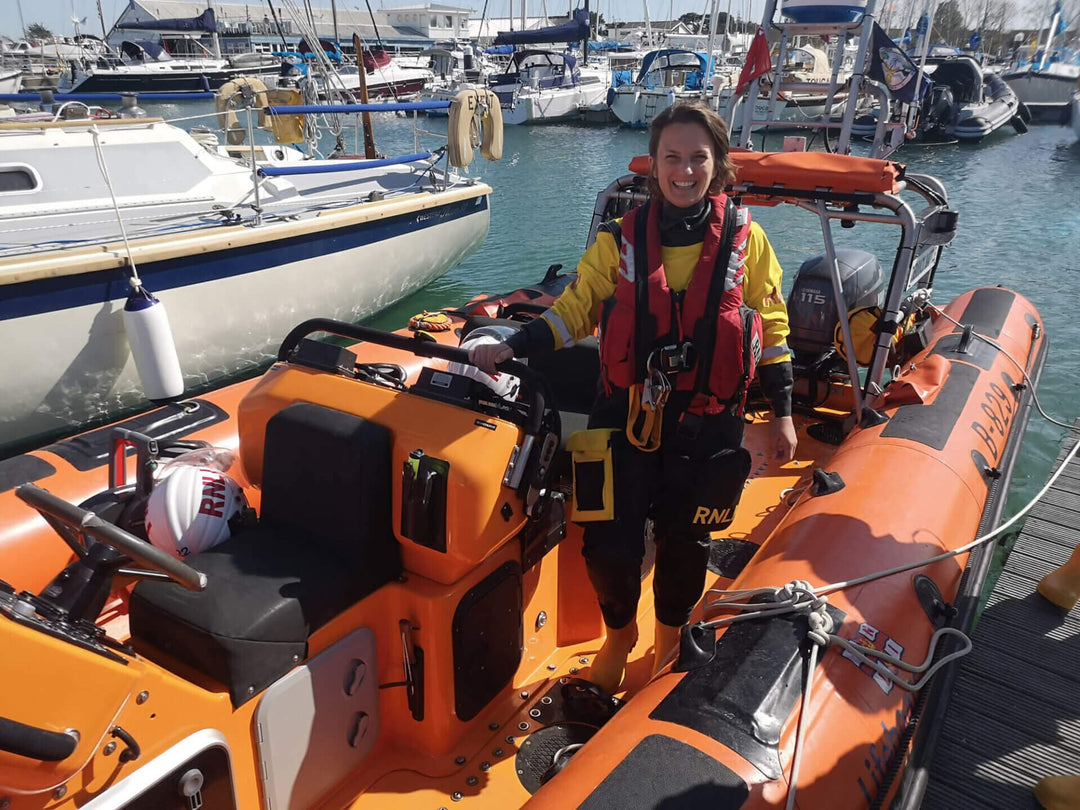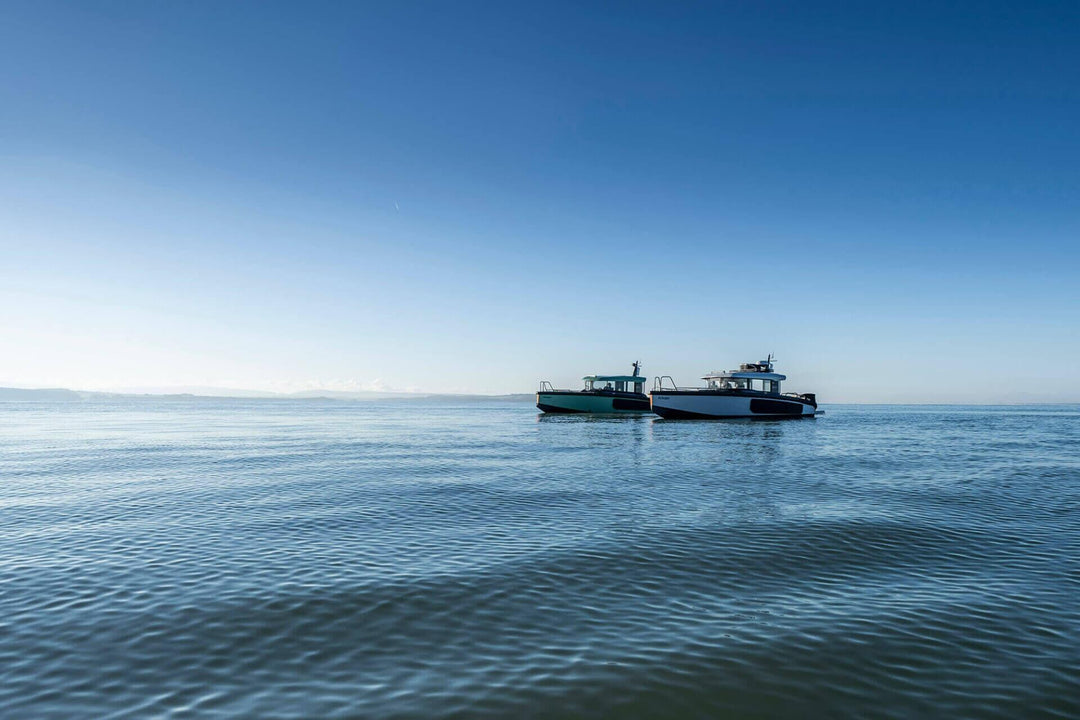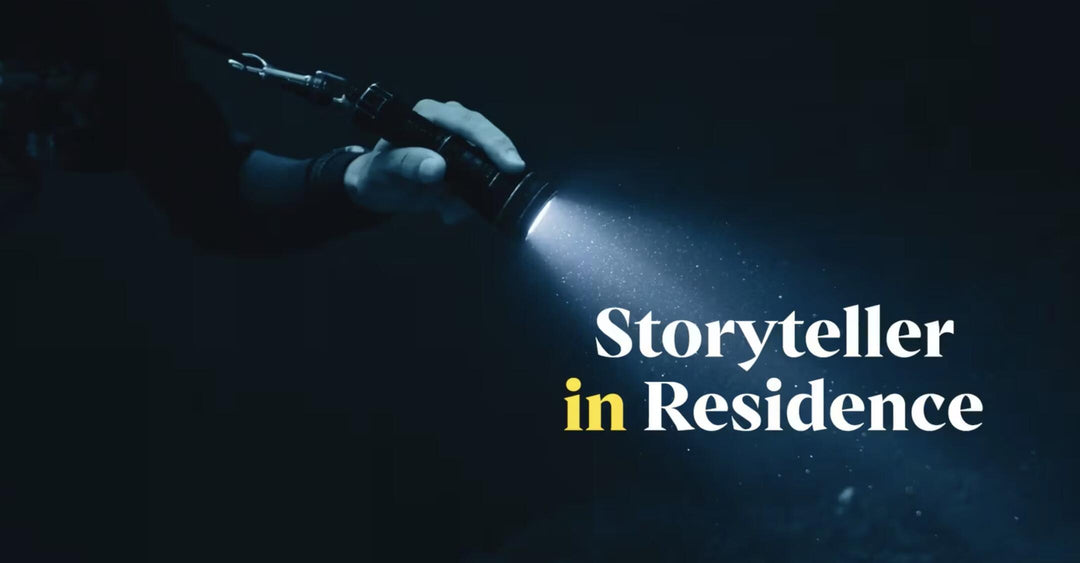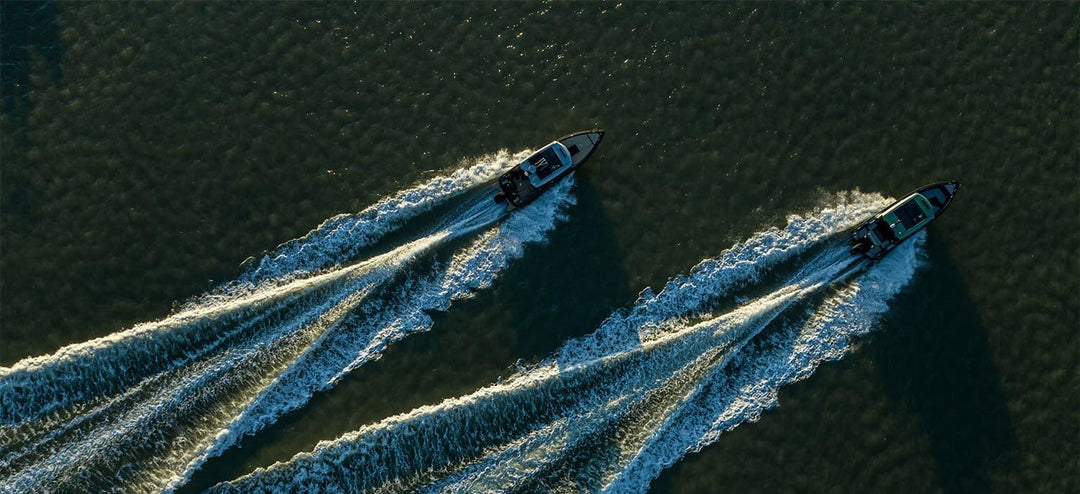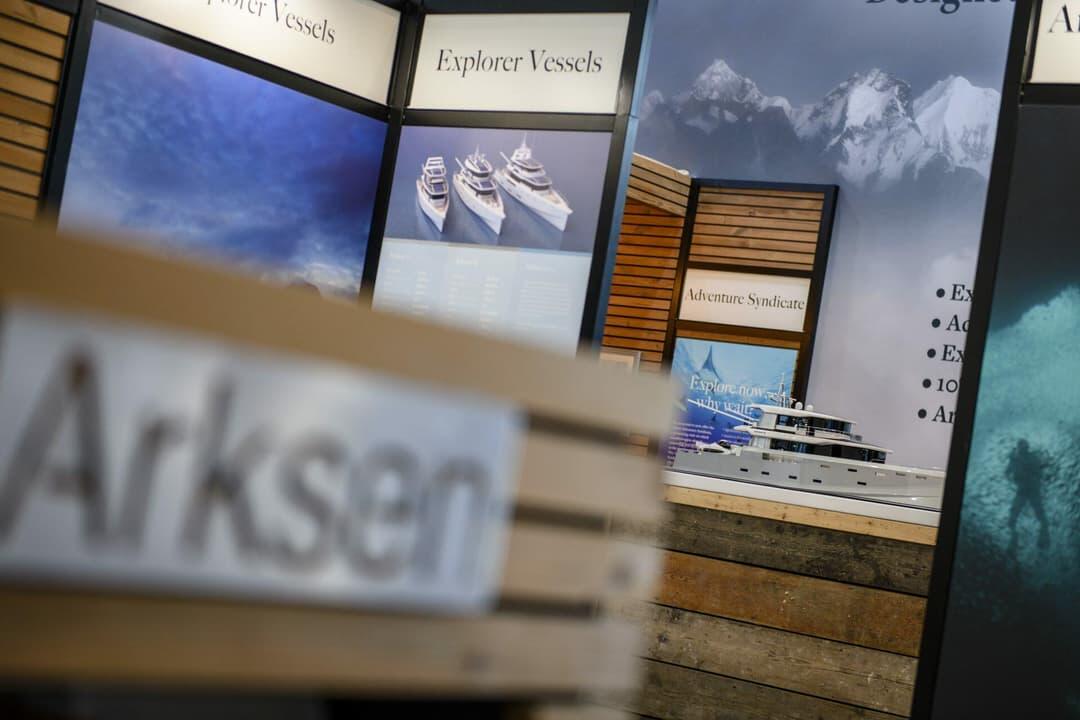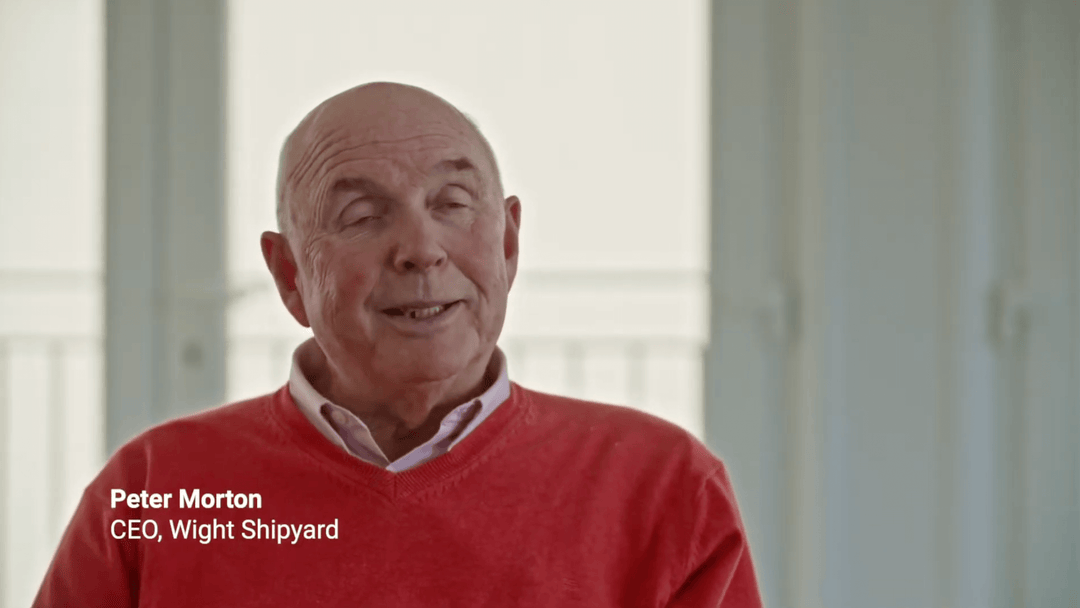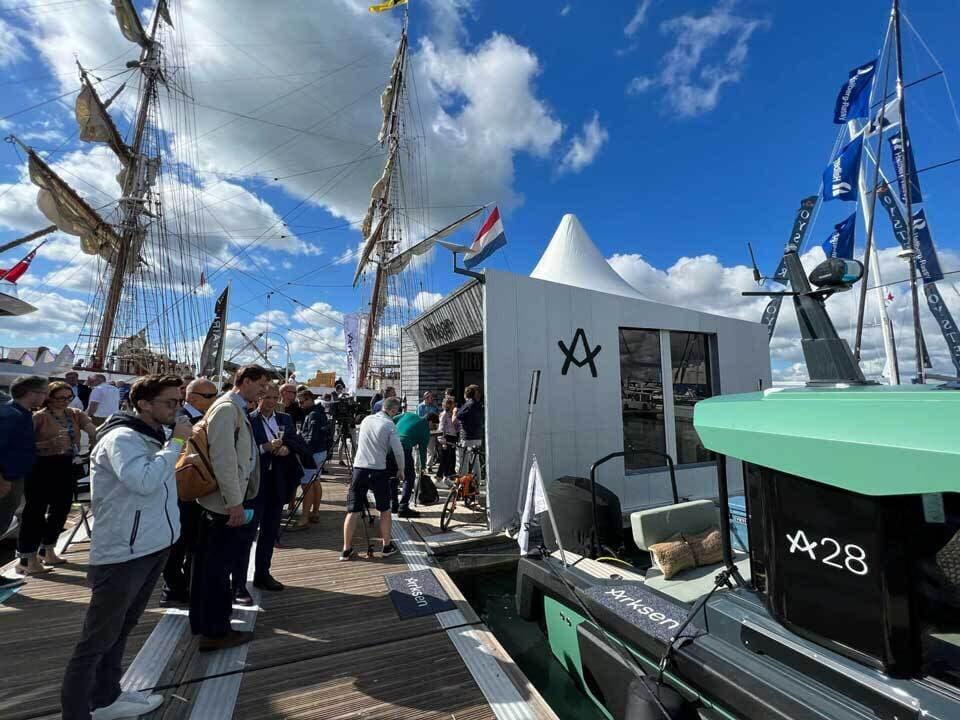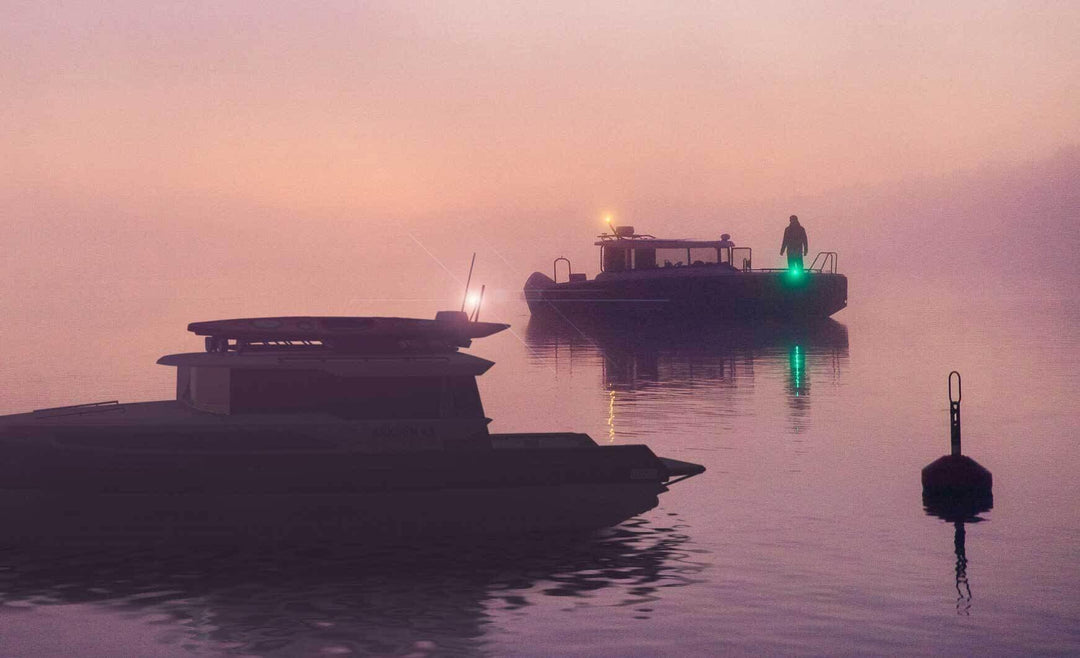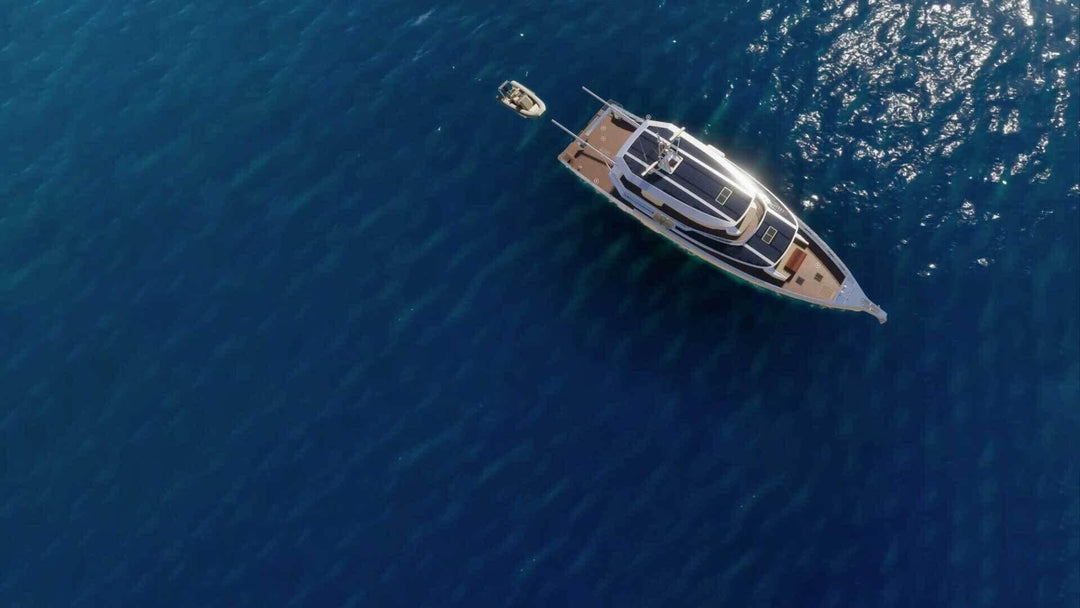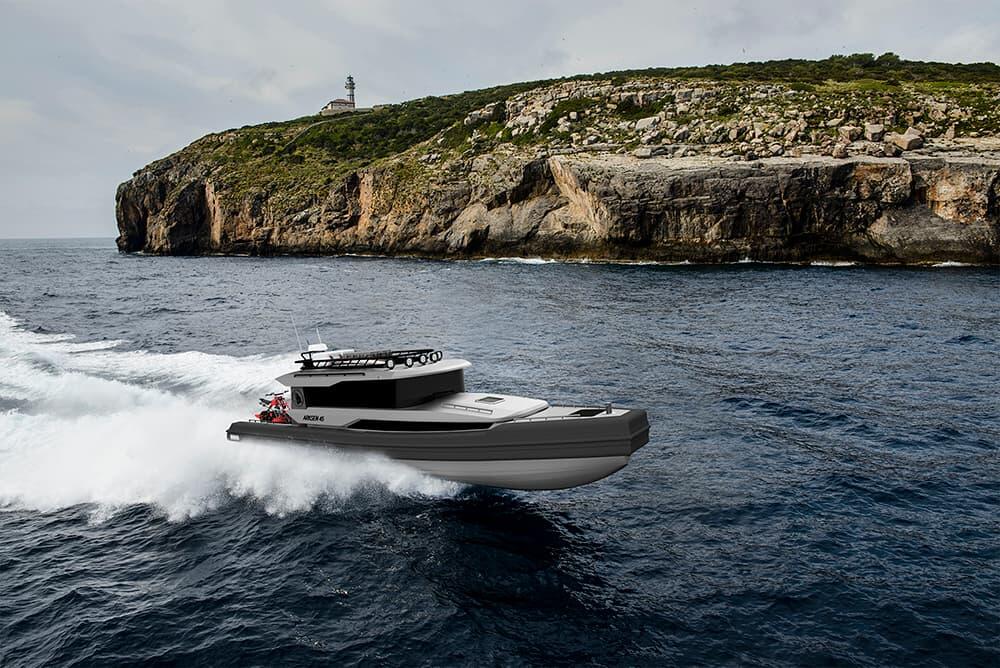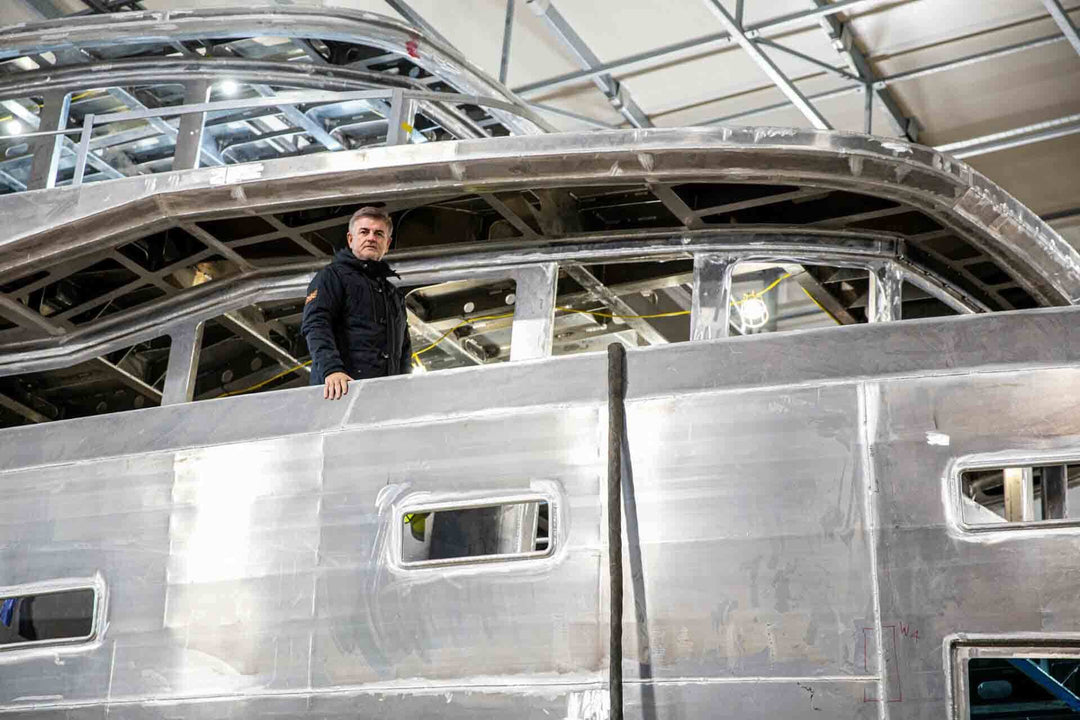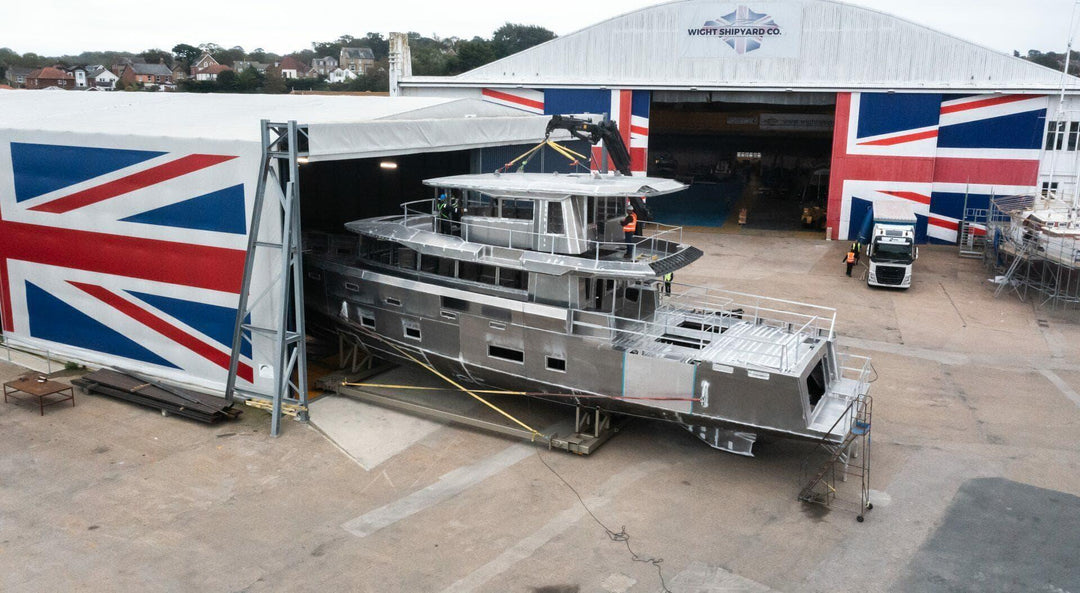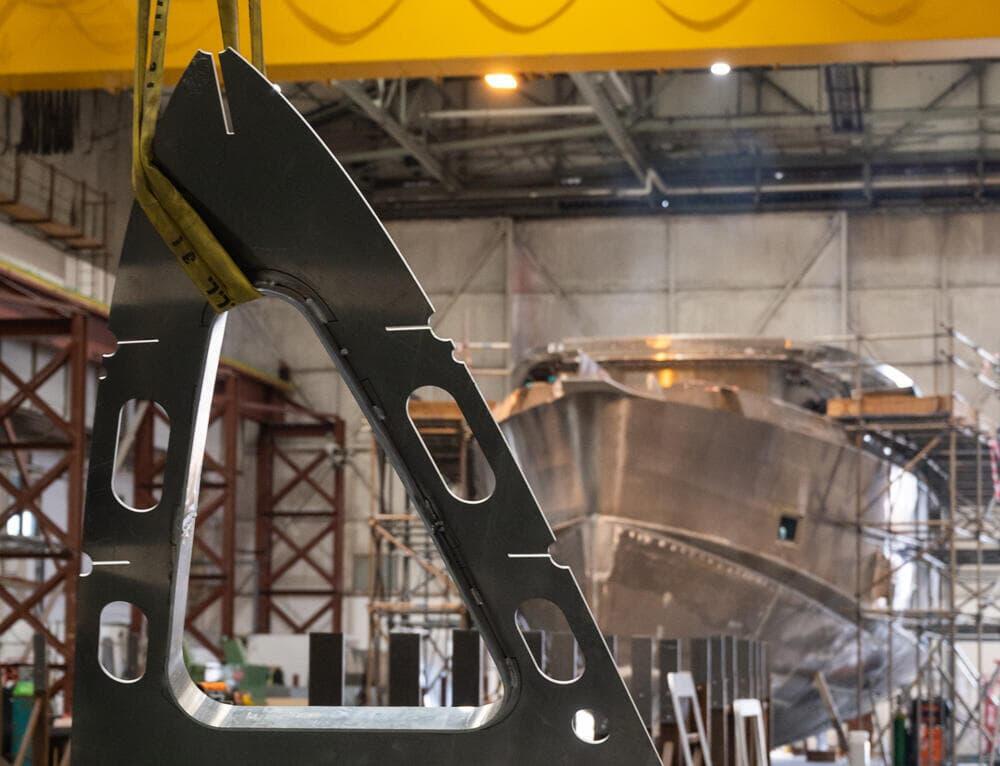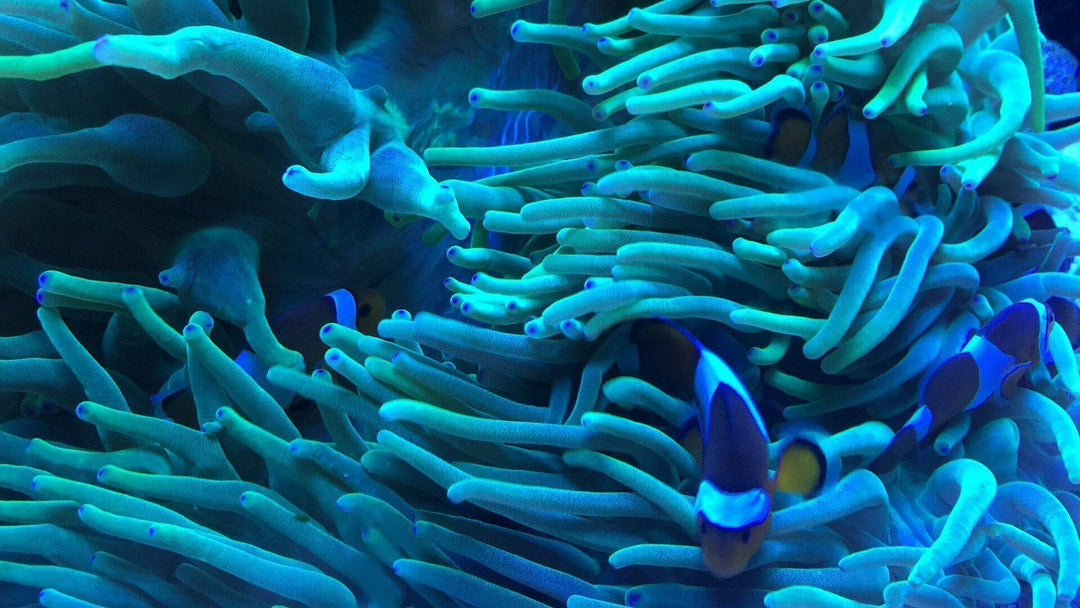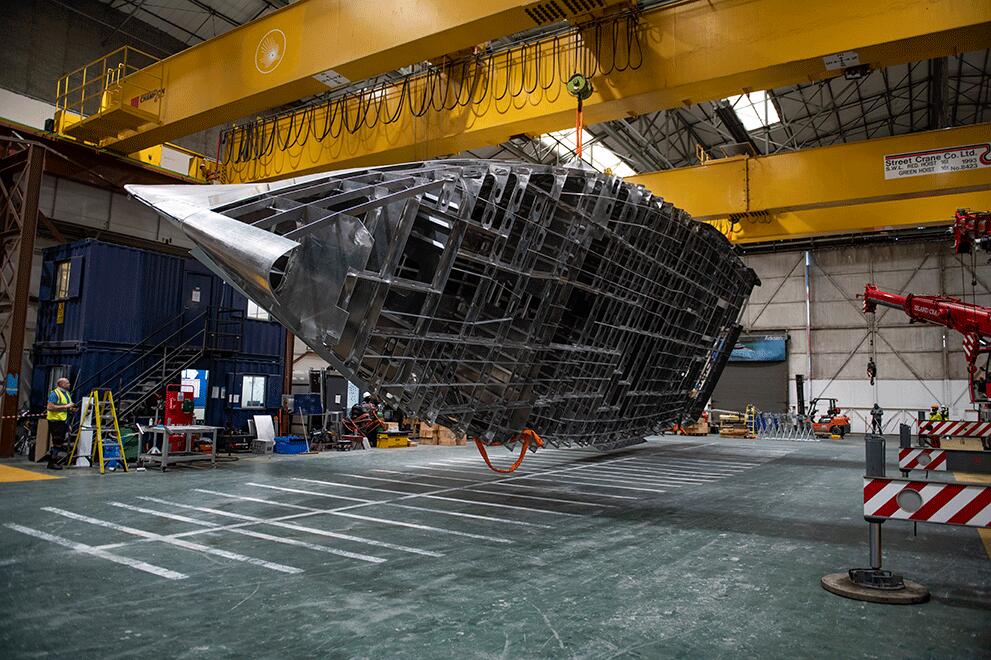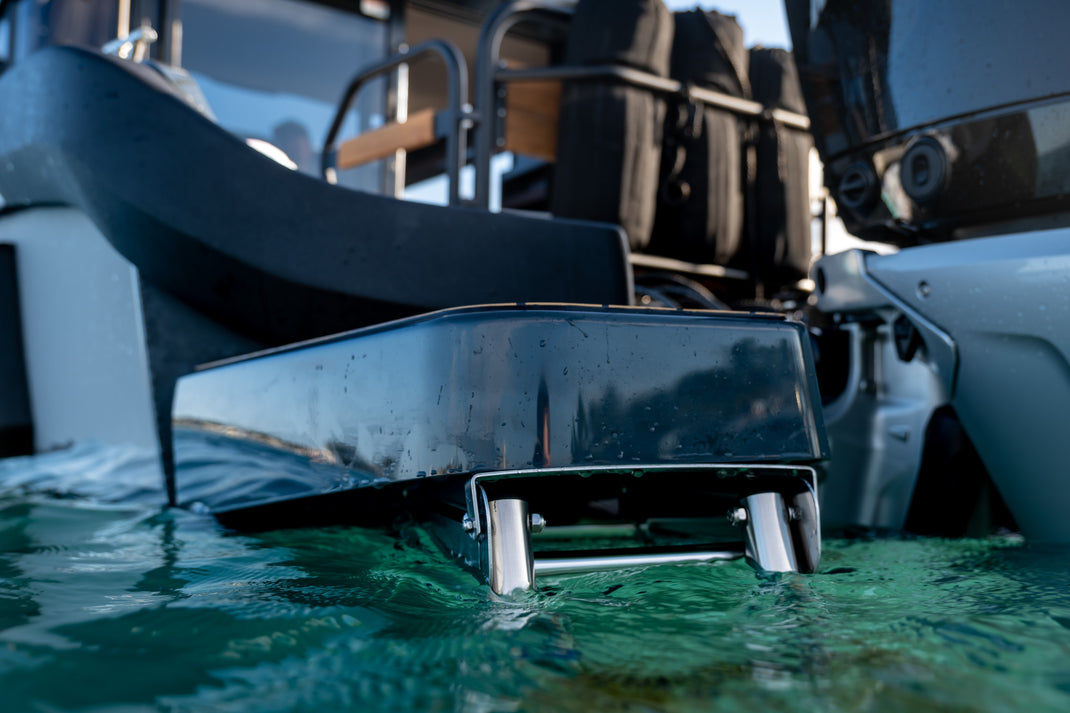
Marine
On any boat, however reliable and highly specified the core systems are, poor accessibility inevitably leads to neglect and eventually to unreliability. So, accessibility is key. With this in mind, every single aspect of the engineering installation is fully modelled in 3D before a single electrical cable or pipe or item of machinery is installed. That process eliminates the usual space planning and accessibility conflicts that many builders frequently try to resolve during the build, when compromise becomes inevitable.
Across all of the marine range Arksen has taken steps to ensure we deliver the mots uncompromising product. This is exemplified by our approach to stabilising systems on the Explorer Series. Where most boats rely on a single system, the Arksen vessels have three options. The principal system comprises big zero-speed fins, but this can be augmented by a small gyro, to provide even more effective stabilisation at rest. These electro-mechanical systems receive belt-and-braces backup from flopper-stoppers, a long established manually deployed system that consumes no power and can be used for silent operation in quiet anchorages. Furthermore, rather than risk damage to the hull structure, in the event of a serious impact, the carbon fibre fins are designed to shear off, and they can be rapidly replaced (even underwater) with a spare set.
Equally important, special attention has been paid to the insulation materials and the effects of extreme cold on the systems engineering, vital considerations for vessels venturing into the ice. For example, the contents of tanks can freeze if they are not adequately insulated, and in extreme circumstances they may have to be heated to prevent icing.
Craftsmanship
The UK has some of the most talented crafts people in the world, with a century’s old tradition of boat building. Nurturing these skills is a core part of the Arksen ethos, which is why each Arksen vessel is completely hand crafted from scratch.
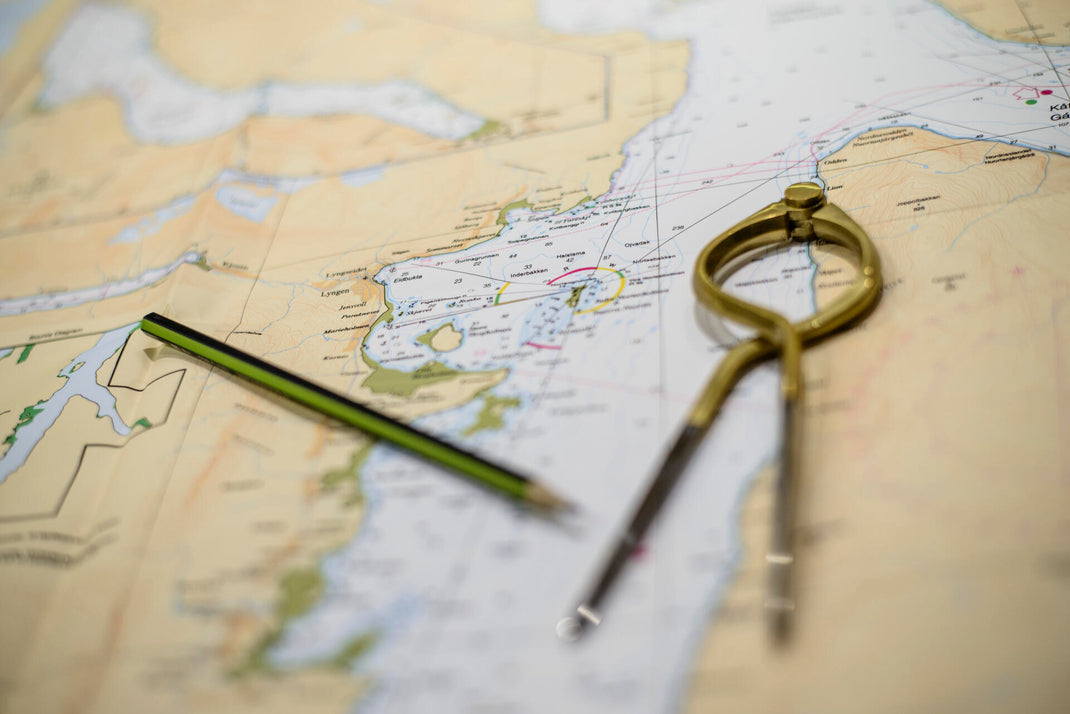
Build Materials
The Arksen Explorer Series hull and superstructure is built in aluminium. Aluminium is a unique metal: strong, durable, flexible, impermeable, lightweight, corrosion-resistant, non-toxic and 100% recyclable. You can weld it, bash it, and cast it. It can be shaped and twisted into any form. It can be rolled into thick plates for hulls, thin foil for wires (and drinks cans) and extruded for tubes.
It reflects about 80 percent of the light that strikes it and almost nine-tenths of the heat that reaches it, which is why astronauts’ space suits have an aluminium coating which prevents extreme heat loss and as well as gain. Using the same principal, it can help keep a room warm or cool. Marine grade aluminium alloys are also, pound for pound, stronger than structural steel. It is the very best material for building explorer yachts.
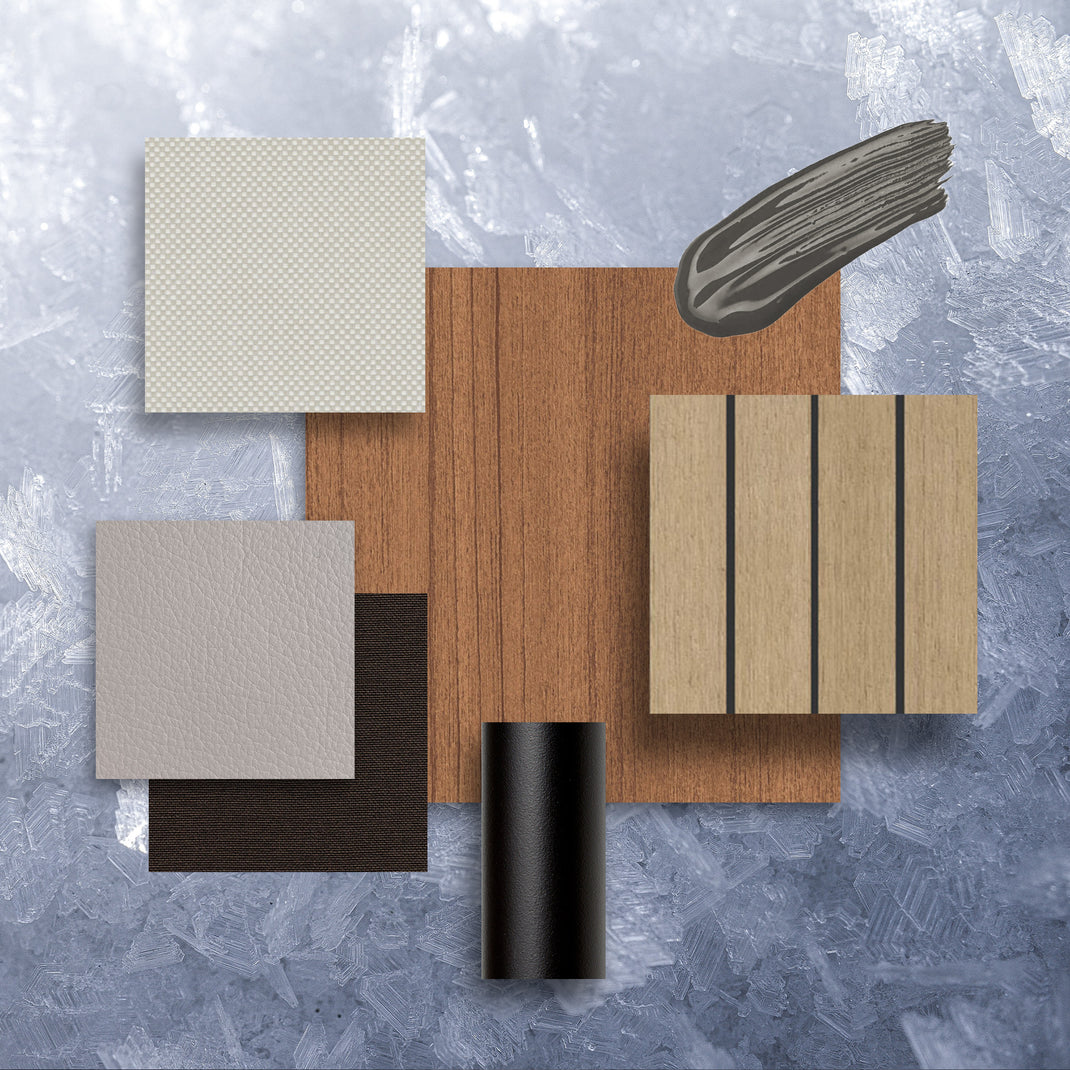
Interior Materials
Our interiors across the Arksen Series not only involve a clever use of space but also an intelligent choice of materials. Weighing up the benefits of a long service life, reusability and durability, we choose high performance materials that are sustainable and can be recycled at the end of their useful life.
The timbers we use for the interiors come from sustainable forests and are ethically sourced. The metals that we use for the fabrication of the vessel are indefinitely sustainable and infinitely recyclable.
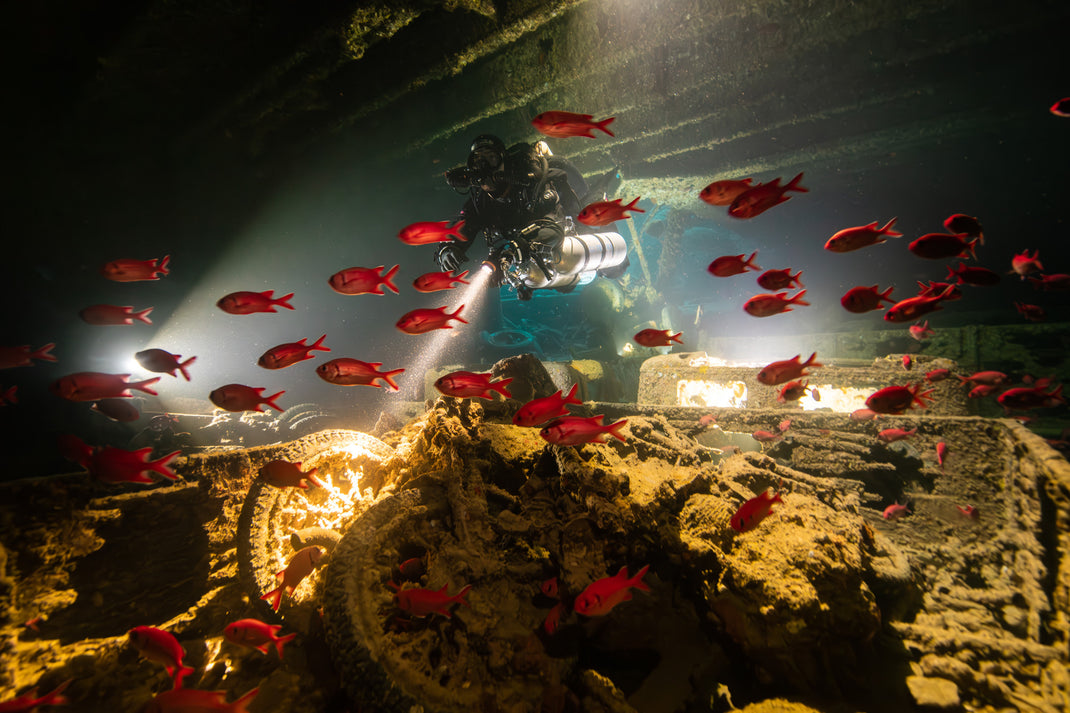
Sustainability
Sustainability is a core focus at Arksen, and as such we have to ensure that any action taken is viewed through this lens. We understand that this not only relates to the design and building of our products but also internally and throughout our chosen partnerships. Therefore, a clear set of sustainable working practices are distributed and understood across the company in order to remain transparent. Sustainability is not just a messaging pillar we use as a marketing tool, it is a core belief and although we understand our own limitations, we must take steps in the right direction.


